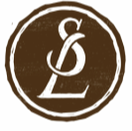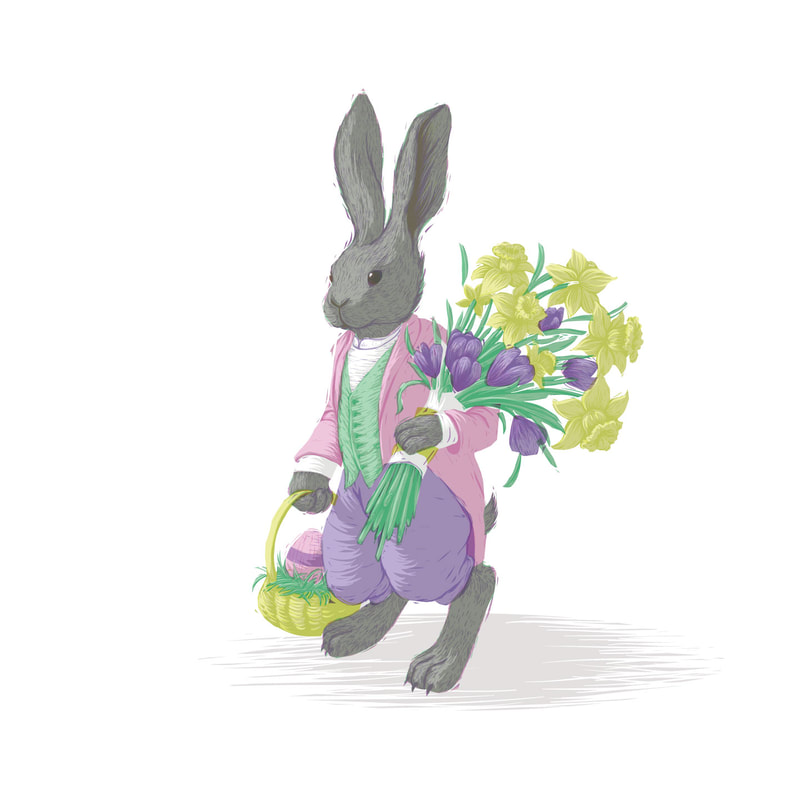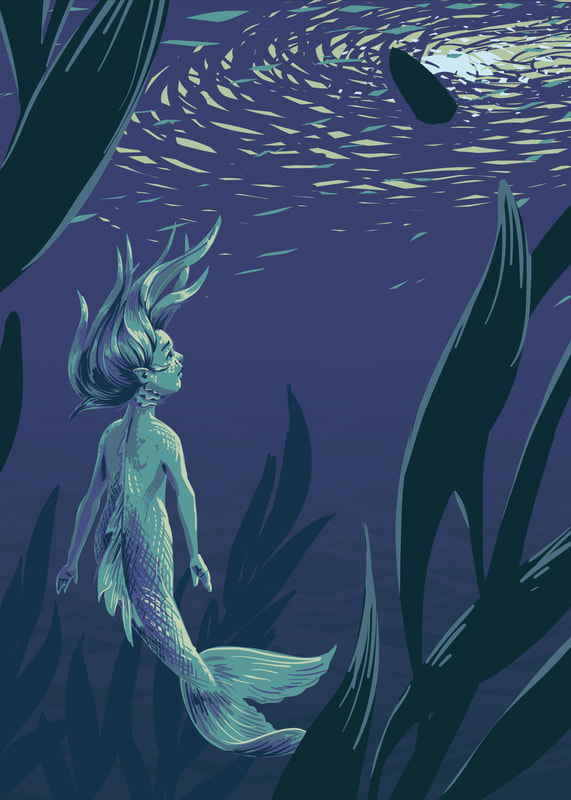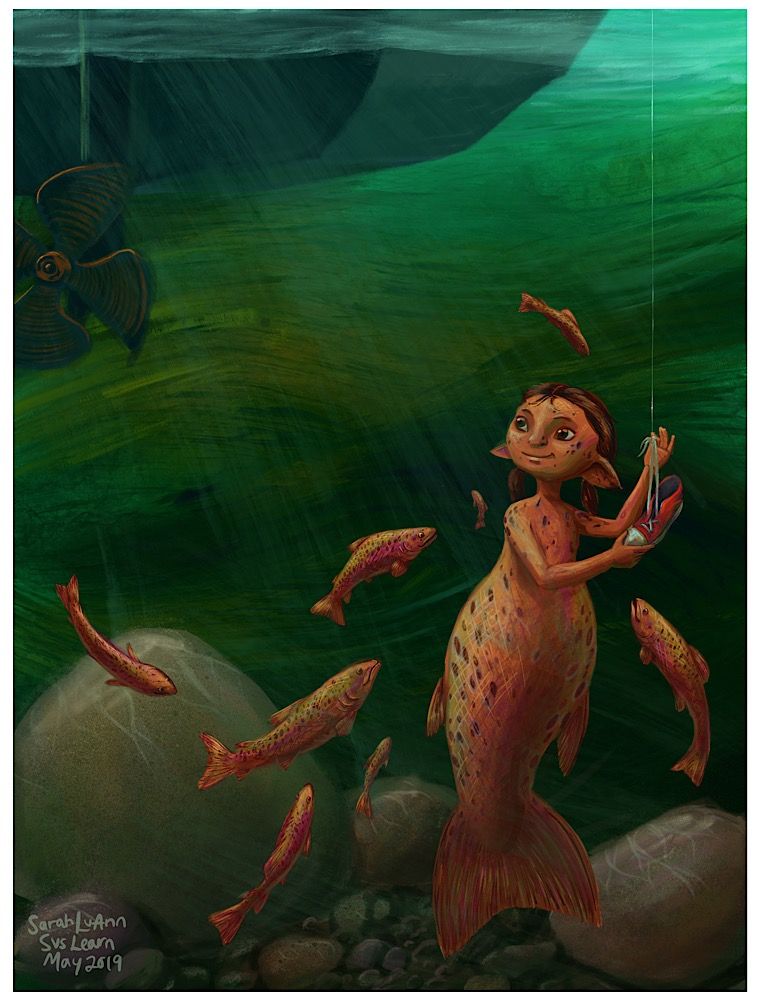|
I'm temporarily pulling this blog out of hibernation to show you a few new things I've done recently... and then I'm putting it right back to sleep. I've been feeling like I'm in a bit of a slump lately, so I've been trying new things to try to work through it. Behold: In April, I did a quick Easter Bunny sketch. It ended up working for both the SCBWI Draw This! prompt (bloom) and Colour Collective (lemon yellow) as well as the holiday... triple dipping! I challenged myself to only use 4 colors in this--pink, yellow, purple, and green. The grey of the bunny's fur is just the green and pink layered over each other... cool, eh? I also played around with some mermaid pictures for Mermay! This first one was another limited palette experiment (limited palettes are FUN!) I think it has only... 6 colors? Anyway, I just wanted to see what would happen if I treated a piece a bit more like a cross between a painting and a reduction print. Some bits I like and some I don't. If I really liked where it was going I would spend some time getting that last 20% just right, but... I don't, so I moved on to other experiments. It was an interesting exercise, anyway. I got an iPad Pro for mothers day (well, mostly just because I said It's Time Now I Need This) and played around in Procreate a bit as well. I kinda just let myself try things and do whatever I felt like, which ended up being in a VERY different style than I usually use. It was fun, but... uncomfortable. I'm headed right back to my comfort zone after this, thank you very much. Last but not least... I actually made a VIDEO. 😲 (<- the face you should be making at that news.) Well, sort of. I just drew in Procreate, and procreate made the video. BUT I recorded audio to go with it, and put it all together, AND uploaded it to Youtube! Which probably seems really basic to a lot of people, but it was a HUGE DEAL to me. Take a look below if you're curious! That's it for what I've been working on recently.
I also added a links section to the bottom of my "about" page, so you can find pages showing contests, interviews, and challenges I've participated in. Take a look if you're interested. My final piece of news is that I am now the Illustration Coordinator for my SCBWI Region, Eastern (Upstate) NY. I'm excited and nervous, but I think it will be a great experience so I'm looking forward to it. And that's it for now--this blog is going back to sleep!
0 Comments
|
Your email will not be shared with anyone. It will only be used for updates from me, and you can unsubscribe at any time.
Categories
All
|




 RSS Feed
RSS Feed